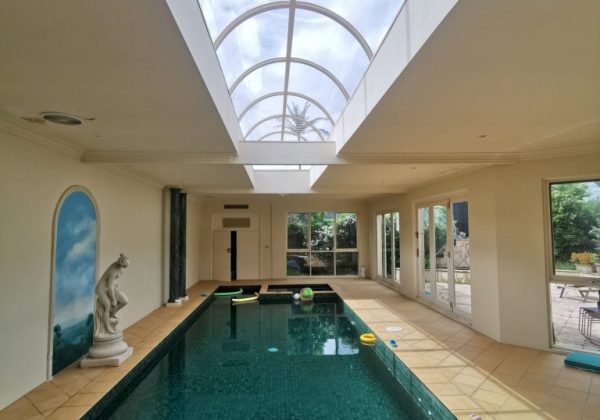1. Can I use PVC or fiberglass instead of polycarbonate for my skylight panels?
While PVC and fiberglass are other materials that can be used for skylights, polycarbonate offers superior benefits. Polycarbonate skylight panels are more durable, offer better UV protection, and have higher impact resistance compared to PVC and fiberglass. This makes them a more reliable and long-lasting option for skylights.
2. How do I clean my polycarbonate skylight panels to prevent discoloration?
To prevent discoloration and maintain the clarity of your polycarbonate skylights, regular cleaning is essential. Use a soft cloth or sponge with lukewarm water and mild soap. Avoid using abrasive cleaners or high alkaline cleaners. Rinse immediately with clean water and never clean the panels under direct sunlight.
3. What is the warranty on polycarbonate skylight panels?
The warranty on polycarbonate skylight panels can vary depending on the manufacturer. However, many manufacturers offer a warranty that covers discoloration, loss of light transmission, and damage from weather conditions for a certain number of years. It’s always recommended to check the warranty details with the manufacturer.
4. Can I use polycarbonate sheets for large skylights?
Yes, polycarbonate sheets are an excellent choice for large skylights. They are lightweight, making them easier to handle and install, even in large sizes. They also have high impact resistance and can withstand extreme weather conditions, making them a durable choice for large skylights.
5. Can I use glazing with my polycarbonate skylight panels?
Yes, glazing can be used with polycarbonate skylight panels. Glazing can help to enhance the durability of the panels, improve their UV resistance, and provide additional insulation. However, it’s important to use a glazing material that is compatible with polycarbonate to ensure the best results.
6. Are plastic roof panels a good alternative to polycarbonate skylight panels?
While plastic roof panels can be used for skylights, they do not offer the same benefits as polycarbonate. Polycarbonate is more durable, has better UV protection, and offers higher impact resistance than most plastic materials. This makes polycarbonate a superior choice for skylight panels.
7. Can I use FRP (Fiberglass Reinforced Plastic) for my skylight panels instead of polycarbonate?
While FRP is another material option for skylights, it does not offer the same benefits as polycarbonate. Polycarbonate is more durable, offers better UV protection, and has higher impact resistance than FRP. Additionally, polycarbonate is more transparent than FRP, making it a better choice for skylights if you want to maximize natural light.
8. Can I install metal panels on my roof along with polycarbonate skylight panels?
Yes, you can install metal panels along with polycarbonate skylight panels. In fact, polycarbonate panels can be perfectly matched with almost any trapezoid industrial metal sheet using Palram’s MetalMatch technology. This allows the polycarbonate panels to be a seamless part of the roof.
9. Can I use white opal polycarbonate for my skylight panels?
Yes, white opal is one of the color options available for polycarbonate skylight panels. White opal panels can provide a soft, diffused light, making them a great choice if you want to reduce glare and soften the light coming into your space.

